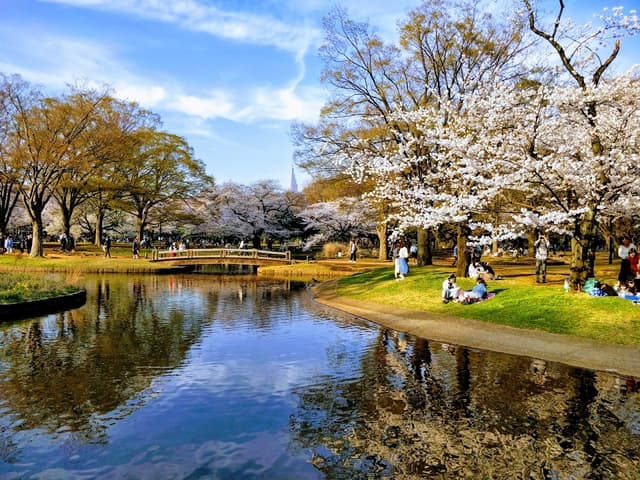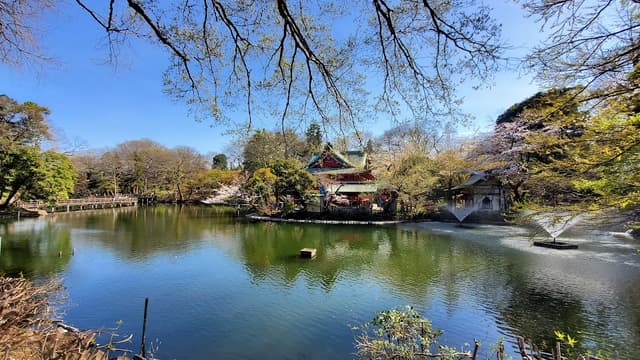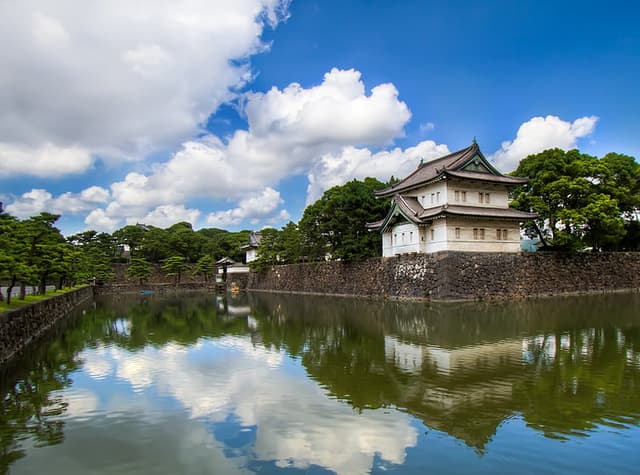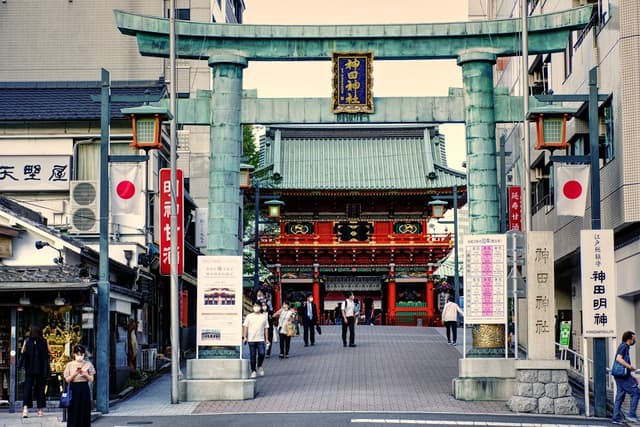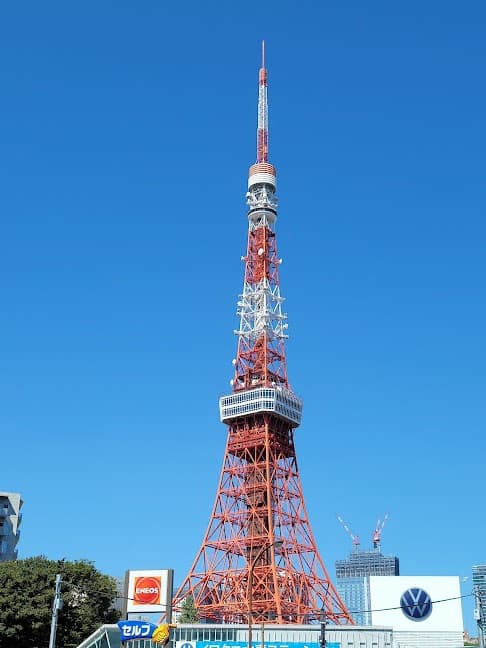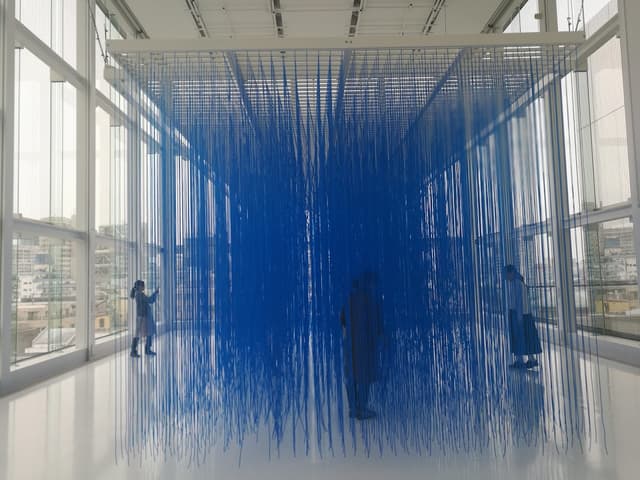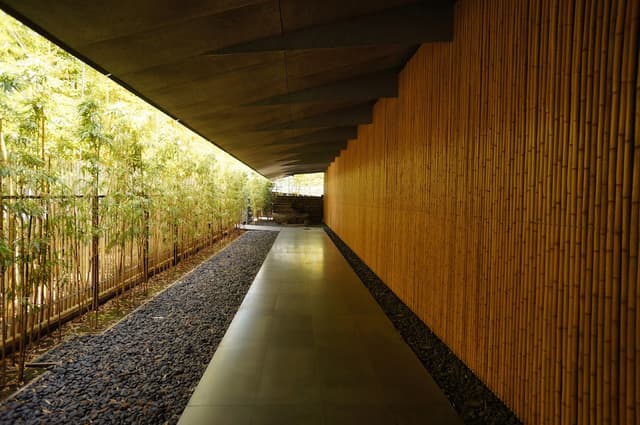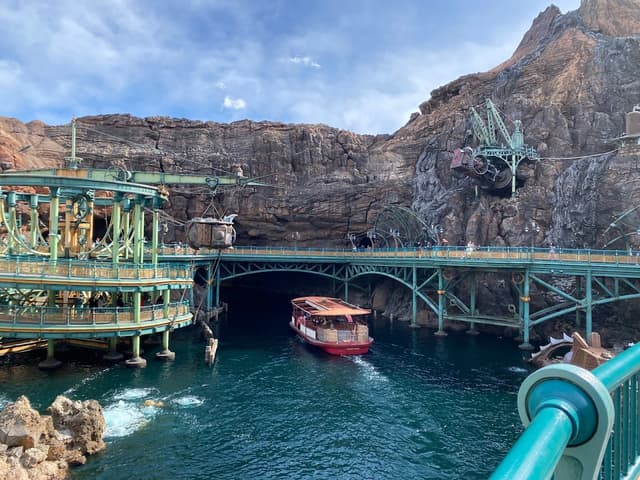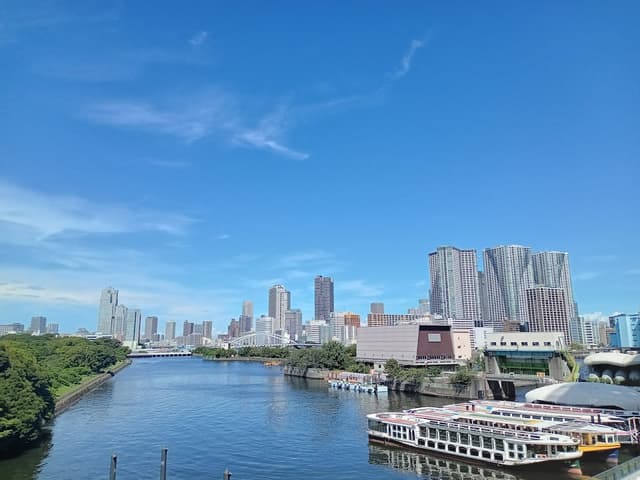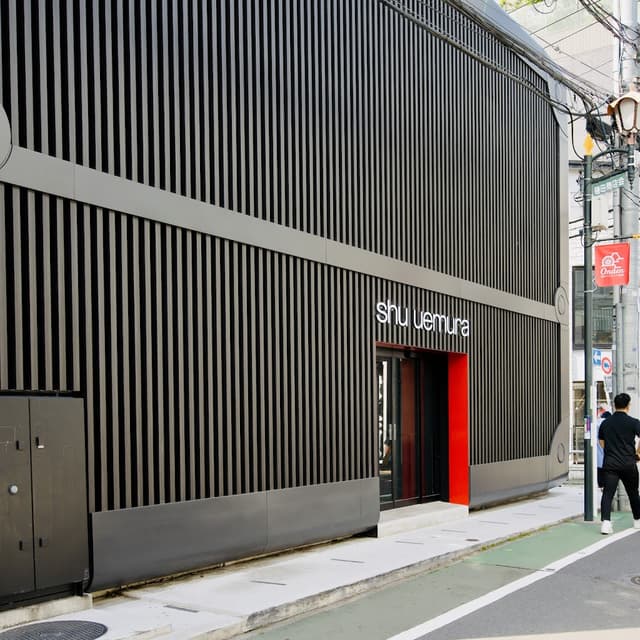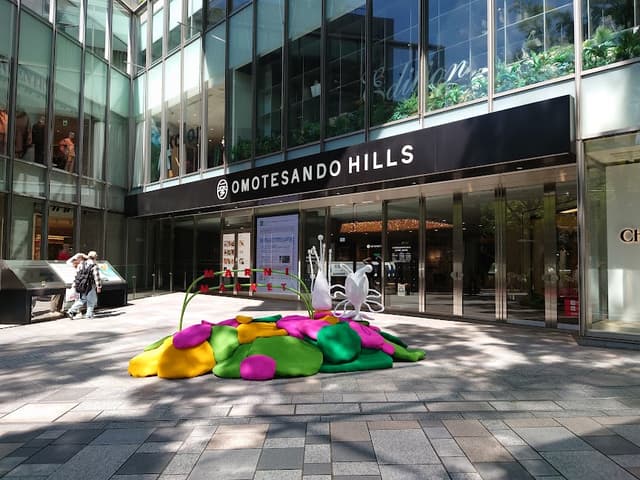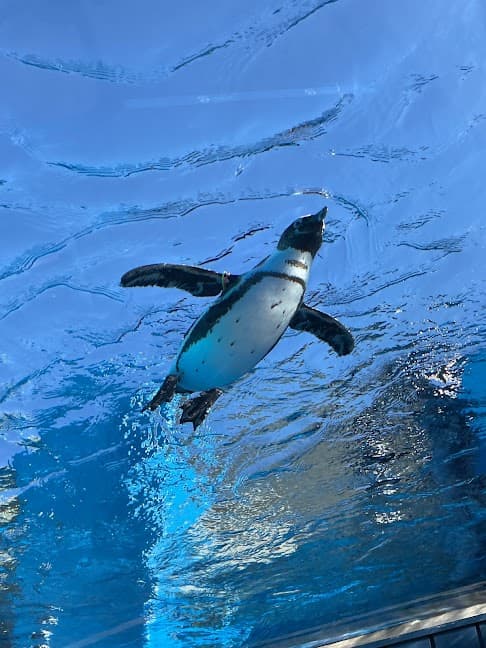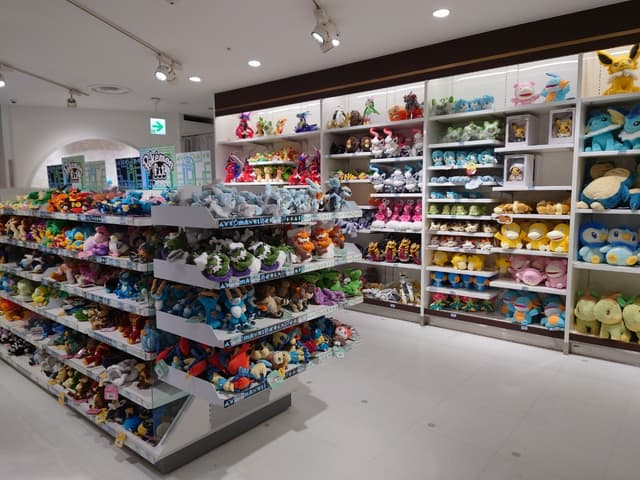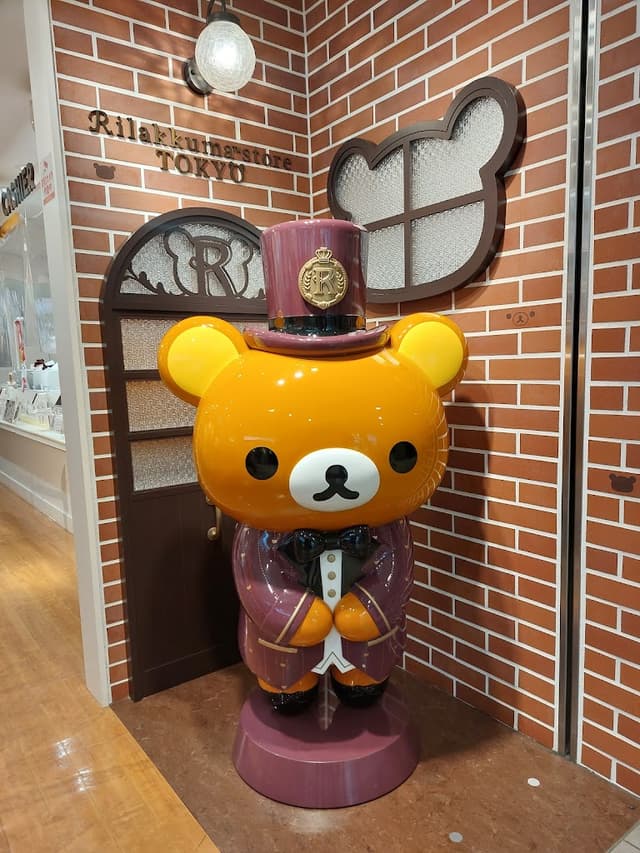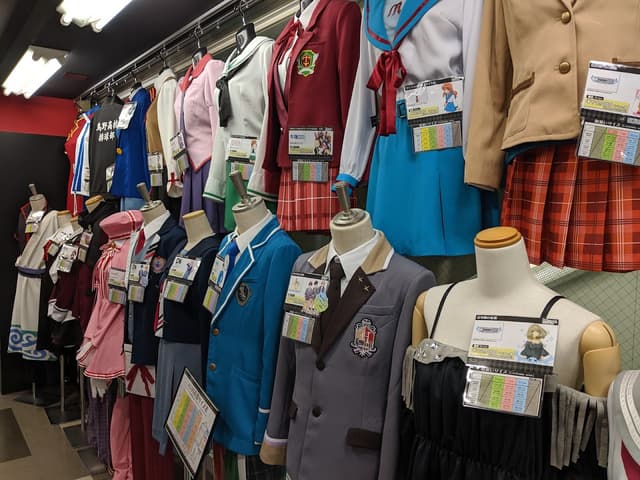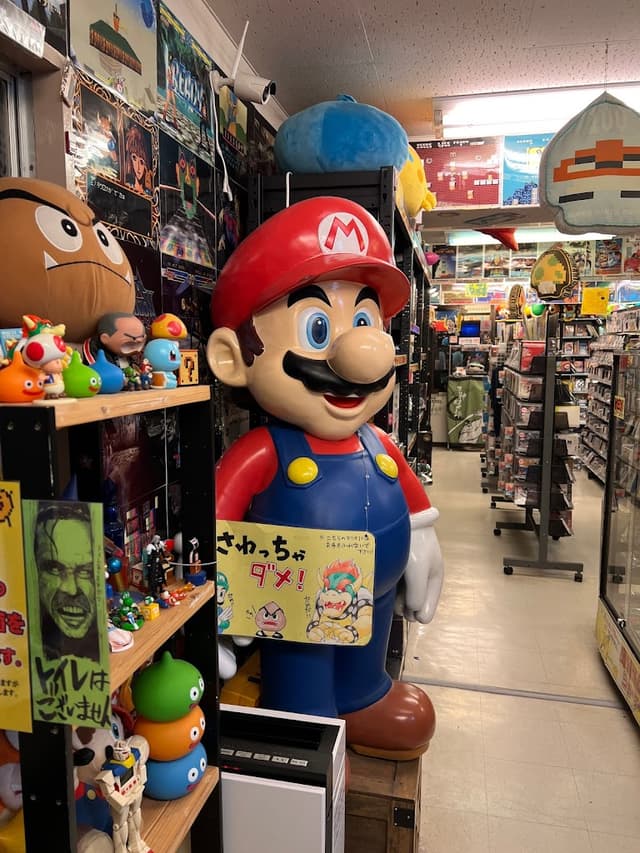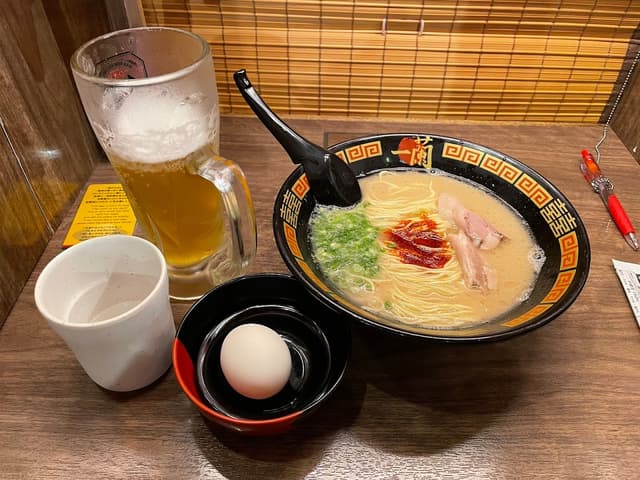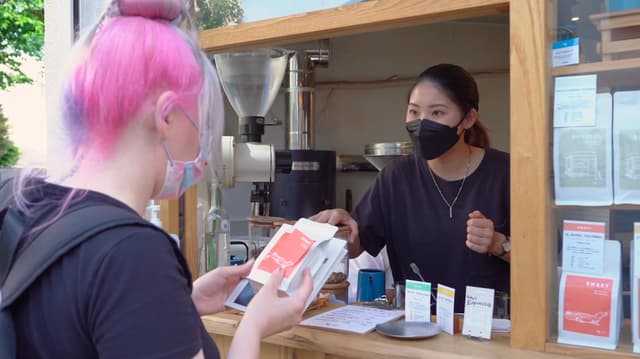Welcome to Tokyo, Japan!
I hope my guide will help you feel more confident to tackle this mega-city. While I know a trip to Japan is often a once-in-a-lifetime experience, but I still hope you will set aside some time in your itinerary to just wander and to get a little bit lost.
Japan is a pretty safe place to explore and to go off-the-beaten path. So I hope you have some unique experiences and make some amazing memories.
With love, Martina
Tokyo Travel Tips:
1. Socks and Shoes
Wear comfy shoes. There is a lot of walking in Tokyo and it can become hilly suddenly. Temples and shrines can have long walkways or paths leading to the main area, as well as uneven stone stairs.
Also, some places require you to take off your shoes before entering, so easy slip on and off shoes are pretty great vs high-top shoes with many laces. And keep in mind, your socks may be exposed to everyone from time-to-time, so maybe leave the hole ridden ones behind!
2. Gotta pee?
Use the toilet for free in the back of most convenience stores. The locals abbreviate it to "conbinis" for short. Inside shopping malls is another excellent location. Almost every single train station has a toilet as well, but some are located after you beep through.
3. No Garbage Cans?
Garbage cans on the streets are rare, but most conbinis (convenience stores) have garbage cans for you to use. Otherwise, keep a plastic bag with you inside your bag to toss your rubbish into, and you can throw it out later.
4. Train Stations are Mazes
Make your plans... and then add an extra wiggle room of AT LEAST 15 MINUTES as a buffer when using the trains. While the trains in Japan are very punctual, the stations themselves can be very large and confusing. This is especially true with: Tokyo Station, Shinjuku Station, Shibuya Station, Shimbashi Station. Give yourself the extra time to escape the maze!
5. Restaurants Close from 2pm-5pm
A lot of non-chain restaurants tend to close at 2pm (last order 30 min before closing) and then re-open at 5pm. If you can't find any restaurants, head to any shopping mall as the food courts are delicious and open all day! Also, there is absolutely ZERO tipping culture in Japan. You'll only confuse people if you try to leave money behind.
6. Cash in Japan
Credit cards and debit cards may not be accepted at restaurants. Make sure you always have a bit of Japanese cash on you. If a store says, "GEN-KIN NO-MI" it means "cash only".
If you need to take out money, head to ANY of the 7/11 convenience stores. They have an ATM that accepts foreign cards, and allows you to take out money from overseas. You can also use the post office ATM or Citibank ATM if you can find them.
7. Hotel Luggage Delivery
You can forward your luggage to the airport or to another hotel in Japan using Yamato Transport for a fee. This makes life so MUCH easier for traveling on bullet train, between cities, or on the subway.
Also, bullet trains have been suffering from overcrowding, so they are now requiring that you pay for a space for your large luggage, so this is such an excellent service to use.
The front reception at your hotel can help set this up for you and it is very commonly used amongst Japanese people on travel too.
I included a link to their official website below:
Japanese Communication Tips
"Simple is best" for communication in Japan!
If you have limited Japanese, speak slowly in English, and try not to use long sentences. For example, "excuse me, do you know where the toilet is?" is a long sentence compared to, "excuse me, toilet?"
As most Japanese people have an understanding of basic English, body language can be very helpful, so feel free to use your acting skills to explain and ask questions.
The Google Translate app is free, and also super helpful, so have it downloaded to your phone. It is an excellent tool, and it can even take live photos of menus, and translate roughly on the spot.
Useful Japanese Words
Kon-ni-chi-wa (こんにちは) – Hello!
Ari-gatou Go-zai-masu (ありがとうございます) – Thank you! This phrase is polite and you can use it for all ages and situations.
Ari-gatou (ありがとう) - Just saying "arigato" is also totally acceptable if you can't remember the whole phrase.
Toe-e-rey (トイレ) - the bathroom/toilet/loo/WC. If you say "toe-e-rey" to a Japanese server, they will know what you mean, and direct you.
Hai (はい) - Yes. You can use it for confirming your orders. Many coffee shops and restaurants will read back your order for confirmation.
Sue-mi-ma-sen (すみません) – it means both "sorry" and "excuse me". If you make a mistake you can say this. You can also say it to get past someone on a train, and you can say this to politely get a waiter's attention too. It is a very flexible word and you'll hear it alot!
O-kai-kei (お会計) - the receipt/cheque/bill. You can also say "check-ku" to get the receipt or cheque/bill.
Itadaki-mass (いただきます) - "Let's eat!" You say this just before eating.
Oishi-katta (おいしかった) - It was delicious!
Ni-hon-shu (日本酒) – the Japanese word for Sake (Japanese rice alcohol)
Oma-ka-se (お任せ) – be aware, this phrase is not commonly used for ordering food at the average restaurant. This is used on high end dining menus, and usually you don't have a choice BUT to order "omakase". Most frequently seen at high end sushi restaurants, as the chef selects fish daily, and you are ordering their set menu.
Contents
1. Parks and Gardens
2. Temples & Shrines
3. Spectacular Views
4. Museums & Art Galleries
5. Ghibli Museum
6. Theme Park
7. Interesting Spots & Activities
8. Outdoor Shopping & Eating
9. Made in Japan: Souvenir Shopping
10. Epic Shopping Malls
11. Pokemon Stores
12. Manga, Anime, Video Game, and Character Shopping
13. English Friendly Food Locations
14. Unique Dining Experiences
15: Bonus: Local Treats
1. Parks and Gardens
Tokyo is a Mega City but it also has a gorgeous collection of inner city gardens, parks, shrines, and temples. They often hold weekend festivals and events all year round, and are great for enjoying a picnic.
(Ueno Park Water Lily Pond)
Ueno Park
@kingkogi
Ueno Park 上野公園 (Ueno Kōen) is a large public park next to Ueno Station in central Tokyo.
Ueno Park is one of Tokyo's most popular and lively cherry blossom spots with more than 1000 cherry trees lining its central pathway. The cherry blossoms are usually in bloom during late March and early April and attract large numbers of hanami parties.
Ueno’s Shinobazu Pond is particularly beautiful in summer, when the giant water lilies turn the entire pond into a sea of green.
Ueno Park is also famous for the many museums found on its grounds: the Tokyo National Museum, the National Museum for Western Art, the Tokyo Metropolitan Art Museum and the National Science Museum.
It is also home to Ueno Zoo, the most popular residents are giant panda bears, which first moved here in 1972 from China, to represent China and Japan normalizing their relations.

Details
Yoyogi Park
@kingkogi
Yoyogi Park 代々木公園 (Yoyogi Kōen) is one of Tokyo's largest city parks, featuring wide lawns, ponds and forested areas. It is a great place for jogging, picnicking and other outdoor activities.
It has cherry trees making for a nice hanami spot in spring (late March to early April). And the ginkgo tree forest turns intensely golden in autumn (late November to early December).

Details
Inokashira Park
@kingkogi
Inokashira Park (井の頭恩賜公園, Inokashira Onshi Kōen) has a large lake filled with lots of adorable wildlife as well as gorgeous bridges. The whole park is surrounded by cherry blossom trees during spring, and the plum trees bloom early.
There is a petting zoo with a famous Guinea pig area with an adorable bride parade as they head back home to their hutches for the night. You can also pet the Guinea pigs and just be happy.

Details
Imperial Palace
@kingkogi
Although the inner grounds are off-limits for the majority of the year, visitors are still able to explore the parks and gardens free of charge and without registration. If you'd like to see the Imperial Palace, you have to get a free ticket for a guided tour. I've included links to apply for the tour!
The area is divided into three main sections: the East Gardens, Kitanomaru Koen Park and the Kokyo Gaien National Garden—all surrounded by a great jogging and biking route for those who would like more than a stroll.

Details
Naka-Meguro Riverside & Park
@kingkogi
The river side is one of the most POPULAR places to see gorgeous Cherry Blossoms lining a long inner city river. There are restaurants and cafes along the way, and pop up shops that offer food and drinks during April-May cherry blossom. Even without the the sakura in bloom, this is one of my favourite streets to roam.

Details
Hotel Chinzanso Tokyo Garden
@kingkogi
Enjoy spring cherry blossoms, summer fireflies, autumn leaves or winter camellias in Tokyo’s most unlikely oasis. The garden is free to enter and quite beautiful.
Check the website of the hotel regarding the Firefly Festival, as the fireflies can only be seen at night, it might require staying at the hotel or visiting the hotel restaurant for access.

Details
Todoroki Ravine Park
@kingkogi
Featured in " Tokyo Tours: Summer Survival Guide" Todoroki Valley is a wonder to behold and it is INSIDE the city!
Todoroki Valley is only a 20-minute train journey from central Tokyo, and it's a serene, tree filled ravine with a brook, walking path, traditional Japanese garden, plus a gorgeous hillside temple.
Stop for shaved ice and dessert at the cafe waiting at the end of the trail. There is also a hidden bamboo forest.

Details
2. Temples & Shrines
Shrines
Built to serve the Shinto religious tradition. The torii gate ⛩ (as seen in the picture below) marks the entrance to a Shinto Shrine.
(Meiji Jingu Shrine)
Temples
As seen in the red picture below, temples are built to serve the Buddhist religious tradition. At the entrance of a temple, there is a gate with a roof housing statues of the protective deities.
(Senso-Ji Temple)
Meiji Jingu Shrine
@kingkogi
My personal favourite location amongst the temples and shrines in Tokyo, this spot is located in Harajuku, a bustling shopping area. The shrine has a huge gate, and after a 5-10 minute walk down the gorgeous opening pathway, the city becomes totally drowned out by birds and rustling trees. Truly gorgeous to behold, and if you're lucky, you might see a traditional Japanese wedding ceremony taking place here as well.

Details
Kanda Myojin Shrine
@kingkogi
Kanda Myojin Shrine was founded in 730, at present a history of almost 1300 years, making it one of Tokyo’s oldest shrines.
It is open throughout the year and admission is free, making it a great stop when you’re in the area - and especially if you’re on a night stroll.
This shrine hosts one of Japan’s three great festivals, the Kanda Festival. It happens on every odd-numbered year (e.g. 2017, 2019, 2021, 2023, 2025...) around 15 May.
They host a massive parade beginning and ending at the shrine, with over 200 mikoshi (portable shrines) as well as hundreds of dancers and musicians.

Details
Nogi-jinja Shrine
@kingkogi
Nogi-jinja Shrine is a great place to visit when you’re tired of the consumerism pervading nearby in Roppongi. A slice of quite in a busy area, this shrine has a lovely little tori gate staircase that isn't as talked about the famous ones in Kyoto. Major difference being that the one in Kyoto are super rammed with people, so I recommend this one for a photo op instead.

Details
Ueno Toshogu Shrine
@kingkogi
Toshogu Shrine (東照宮, Tōshōgū) is a lavishly decorated shrine complex consists of more than a dozen buildings set in a beautiful forest.
Countless wood carvings and large amounts of gold leaf are used to decorate the buildings, visitors may note that Toshogu contains both Shinto and Buddhist elements.

Details
Togo Shrine
@kingkogi
Hidden behind the busy streets of Harajuku is this peaceful shrine, as well as a serene Japanese garden just outside the shrine grounds where you can take a quiet stroll.

Details
Hie Shrine
@kingkogi
Can you believe this is in Tokyo?
There are three entrances to this temple. The Sanno torii gate (wooden gates found at the shrines) entry is the most convenient because it has an escalator next to the stairs to get up to the hilltop shrine! Heck yes for easier accessibility.
In mid-June, Hie Shrine has the Sanno Festival, one of Tokyo’s three major festivals. Worshippers dance and sing to the beat of taiko drums and there are hundreds of lanterns dedicated to the deity.

Details
Nezu Shrine
@kingkogi
Nezu Shrine, a short way from Tokyo's famous Ueno Park, has its roots in almost 2,000 years of Japanese history.
Nezu Shrine is famous first and foremost for its azalea garden that is a riot of vivid spring pinks, whites and purples in April.
But even when the azaleas are not in bloom, Nezu Shrine is a must-see for its elegant old buildings, kept in pristine condition with crisp, colorful traditional designs.
One architectural feature of note is the hundreds of torii archways that make tunnel-like paths around part of the grounds.

Details
Senso-ji Temple
@kingkogi
Sensoji 浅草寺 also known as the "temple with the big lantern in Asakusa". It is one of Tokyo's most colorful and popular temples.
When approaching the temple, visitors first enter through the Kaminarimon (Thunder Gate), the outer gate of Sensoji Temple.
As you enter, you will walk through a shopping street called Nakamise. Alongside typical Japanese souvenirs such as yukata and folding fans, various local snacks from the Asakusa area are sold along the Nakamise.
Beyond the Hozomon Gate stands the temple's main hall and a five storied pagoda.

Details
Tokyo Daibutsu Temple
@kingkogi
Located in a Tokyo suburb, it takes about 1 hour by train from downtown Tokyo to see the great Tokyo Daibutsu (big Buddha statue).
Unknown to many travelers despite being in one of the busiest cities in the world, it’s hidden deep in the suburbs within a temple with an ancient history.
In addition, there is a small Japanese-style garden, a pond filled with colorful carp, a bell tower, historic graves and stone statues of the Seven Lucky Gods.

Details
Gotokuji Temple
@kingkogi
Featured in one of my Tokyo Tours videos on King Kogi YouTube, Gotokuji Temple 護国寺 is well known across Japan as the origin of Maneki-neko, the “beckoning cat” figurine. This temple is also wheelchair accessible which can be hard to find in Japan.

Details
Watch adventures near Gotokuji Temple below:
3. Spectacular Views
Tokyo has some incredibly tall buildings with epic views. There are lots of popular towers and buildings which require you to purchase a ticket to use their observation decks. However, I've also included some excellent spots for getting a view of the city, free of charge.
VIEWS FOR FREE:
Tokyo Metropolitan Government Building
@kingkogi
FREE observation deck with a lovely view of Tokyo. Excellent choice for budget minded travellers.

Details
Asakusa Culture Tourist Information Center
@kingkogi
FREE Observation Terrace with a view of Asakusa and Tokyo Sky Tree: 8th floor opened from 9:00 a.m. to 10:00 p.m
Designed by Kengo Kuma, located across the street from Sensoji Temple's Kaminarimon gate.
It offers free guided tours, currency exchange, tourism information magazine, public wireless LAN (Wi-Fi Nex, Taito Free Wi-Fi available), AC power supply (12 outlets at the north counter).

Details
Carrot Tower
@kingkogi
FREE Observation Deck: the top floor of this 26-storey building is a great place to enjoy amazing views while lounging on one of the comfy sofas.
Sangenjaya (I have Tokyo Tours on this area) is just two stops away from Shibuya on the metro, so this view is largely low-rise and residential. On a clear day, you get an unobstructed view of Mt Fuji.
There's also a restaurant and an affordable cafe!

Details
Bunkyo Civic Center observation lounge
@kingkogi
FREE Observation lounge at the Bunkyo Civic Center. Located on the east, west, and north sides of the 25th floor.
From a height of about 105 meters above the ground, you can see the University of Tokyo, Koishikawa Botanical Garden in Bunkyo Ward, Tokyo Skytree, the skyscrapers of Shinjuku, Mt. Fuji, and Mt. Tsukuba.
Opening Hours: 9:00-20:30

Details
VIEWS WITH AN ENTRANCE FEE:
Shibuya Sky
@kingkogi
The highest, clearest, and most epic 360 view you'll get of Tokyo. You have to pay for tickets to enter.
SHIBUYA SKY is composed of three zones, so as you lead your way up to the rooftop, there are artsy digital experiences along the way.
There is the SKY GATE, SKY GALLERY, and then the SKY STAGE (the rooftop).
There is also an epic snack and music bar on the 45-46F called the Paradise Lounge, open from 10am-11:30pm (last order at 11pm)
THE ROOFTOP BAR SHIBUYA SKY
It runs from April 28 to November 30 (last updated 2023)
You can enjoy music, drinks and snacks, on sofa seats on the rooftop.

Details
Tokyo Skytree
@kingkogi
There are two spots on the Tokyo Skytree which allow for epic views of the city, you can choose to pay for just a visit to the TEMBO DECK or you can pay to see both the TEMBO DECK + TEMBO GALLERIA,
1) the TOKYO SKYTREE TEMBO DECK is covered in huge 5-meter-high glass for a 360-degree panoramic view, allowing visitors to see from the base of SKYTREE up to 70 kilometers away in the distance.
2) The TOKYO SKYTREE TEMBO GALLERIA will take you from the "floor 445" to SKYTREE's highest "floor 450" via a glass tube.

Details
Tokyo Tower
@kingkogi
Sailor Moon fans will delight to see the Tokyo Tower in the distance when they first arrive in Japan as it is featured in the comics/tv shows quite frequently.

Details
4. Museums & Art Galleries
Museums are great locations for hiding out on a rainy day, or for beating the humid Tokyo summer heat.
The museum cafes can be quite beautiful, as pictured below in the famous cafe and restaurant in the National Art Center.
The National Art Center, Tokyo
@kingkogi
With one of the coolest restaurants and cafes, many people visit just to see the space. There are actually 4 cafes in this museum!
It has operated as an art center where people can experience various artistic expressions. They hold a variety of exhibitions by making use of Japan's largest exhibition space (14,000 m2), to collect, publish, and provide information and materials related to art.
Viewing fees depend on which exhibition you'd like to see, as special exhibitions have viewing fees determined per each exhibition. Public exhibitions vary depending on the art group.

Details
Mori Art Museum
@kingkogi
One of my fav places, the Mori Art Museum in Roppongi Hills hosts numerous exhibitions throughout the year that feature artists from Japan and abroad. I've seen many awesome events, including the Sailor Moon museum.
It is located in a mega tall tower, with an epic sprawling view of Tokyo.
Check their website (which I included below) to see what they are hosting.

Details
Tokyo Photographic Art Museum
@kingkogi
Super special museum, thoughtfully curated. It also has a cozy cafe serving food with vintage photo designs. The exhibits change, so check their website to see what’s on.

Details
Nanzuka
@kingkogi
The gallery comprises four floors, two of which are used for exhibitions. This modern gallery supports emerging Japanese artists by providing them with a stepping stone into the international art scene. Nanzuka is often involved in collaborations with creatives in other industries – such as fashion, design and music.

Details
Espace Louis Vuitton
@kingkogi
Located in Omotesando on the top floor of the Louis Vuitton building, this exhibition space hosts installations and works by leading contemporary artists.

Details
Museum of Yebisu Beer
@kingkogi
For 500 yen (as of 2023) enjoy a beer tour that comes with 2-3 free beers. The tour is only in Japanese but still interesting to see all the exhibits related to beer production. The photo panels that show the history of Yebisu Beer are very interesting if you're into the history of Japanese beer.
There is a "beer corner" and restaurant where you can drink your favorite beer for a fee. This is a system where you buy a token, and have a beer poured at the counter.
Check in advance if it is opened, as it was closed for construction in 2022!

Details
Nezu Museum
@kingkogi
Small but beautifully designed museum, featuring pieces dating as far back as the 6th Century. Descriptions provided in English, and it boosts a wonderful garden.

Details
Bunka Gakuen Costume Museum
@kingkogi
This is a specialized university-affiliated museum, working with Bunka Fashion College to showcase Japan’s fashion landscape. Since it is small, there are few exhibits, but it is very interesting to visit.
It also has various clothing items from East and Southeast Asia after World War II.

Details
5. Ghibli Museum
I recommend spending a whole day in this area, don’t rush in and out just for the Ghibli Museum! Kichijoji is a totally amazing spot to hang out in.
Ghibli Museum
@kingkogi
Tickets must be purchased in advance to enter. I’ve included a link to the English website to purchase tickets 🎟️
Photography and videography is not allowed while inside the museum, and that makes it EXTRA engaging and magical.
Tiny doors and little details hide all over this museum, which is much more like an art exhibition.
The gift shop is usually packed, but there are lots of items for fans to buy, including dishware, toys, stationary, and the movies with English and Japanese on DVD.

Details
I’ve also included a FREE digital guide to the West Tokyo city of Kichijoji, which is the city the Ghibli Museum is located. I lived here for 5 years, and I've listed over 26 spots for you to visit if you're in the area.
I spent years living in this West Tokyo area called Kichijoji.
It has it all: sprawling parks, shopping, standing bars, lantern packed alleys, and tons of local feeling.
This is a free guide, and a peek into what my paid guides have to offer!
Information about the popular local spots, off the beaten path finds, and cafes, coffee shops, street food, desserts... there is something for everybody!
You can use this guide over a few days or multiple visits to Japan, there is just too much to tackle in one day.
6. Theme Parks
NOTE: it can be easier to buy tickets to Tokyo Disneyland and Disneysea via a travel agent OR you can get tickets easily if you book one of their official hotels. The Japanese website is known for rejecting foreign credit cards, but give it a shot! Tickets are recommended to be purchased in advance.
Tokyo Disneyland
@kingkogi
I've been to both DisneySea and Disneyland. Purchasing tickets in advance is recommend as it can get quite crowded.
The official website often rejects foreign credit cards so using a travel agency or purchasing at an official disney hotel is much easier.
Heads up: the summer time in Japan is very very hot and humid, and very crowded, so prepare with hats and sunscreen!

Details
Tokyo DisneySea
@kingkogi
My personal favourite of the two Disney resorts available, Disneysea has more thrilling rides and an amazing world built. You'll think you're in Venice, Italy and then turn the corner and end up in the Little Mermaid's world. It is a super cool experience.
They also serve alcoholic beverages, and all the food is pretty reasonably priced. Try the steam buns and explore the hidden food court located near the Journey to the Center of the Earth!

Details
NAMJATOWN
@kingkogi
NAMJATOWN is a very quirky, slightly dated indoor theme park located inside the "Ikebukuro Sunshine City" which is an enormous mall that houses a museum, an aquarium, and a planetarium.
It is known for pop-up events and special goods stores.
NAMJATOWN is on the second floor, and while it has games and rides made for kids, it is also known for their Gyoza Stadium, where you can try over 10 different kinds and styles of gyoza.
They also have Fukubukuro Dessert Yokocho (Dessert Alley) where you can eat over 30 types of ice cream.
And finally, they have Nyanja Town which is a cat cafe where over 30 unique cats live.
On the 3F there is a new pop-up space with a massive capsule toy area, so browse the mall area to see what goodies are available during your visit.

Details
LEGOLAND DISCOVERY CENTER Tokyo
@kingkogi
This modest Lego themed center, has a 4D movie, model building, and a gift shop. It should be noted, reviews on this place say it's a great place for kids under 8 years old, but at the same time, if you're a Lego building fan, there are some pretty cool Japanese structures created.
Buy tickets online for a discount, I've included the link below!

Details
7. Interesting Spots & Activities
Miyashita Park
@kingkogi
This is one of my fav places to go for a stellar view of Shibuya. Despite being called a park, it is also a mall!
The top floor of this mall is an epic open park with skateboarding, a bouldering wall, beach volleyball, and pop-up events. The street level has loads of unique food stalls, often brimming with local salary people chilling after work.

Details
teamLab Planets TOKYO
@kingkogi
I've been twice to this excellent indoor exhibition. Room after room of exciting otherworldly art, this art exhibition is 100% worth the visit.
TIP: Make sure you wear clothing that can be rolled up to your knees, as there are a few rooms filled with water. Also, there are mirrored floors in some of the rooms so if you wear a skirt, wear some shorts underneath. They provide you with a free locker for your stuff, so you can enjoy it with just a phone or camera.

Details
Ganso Shokuhin Sample-ya Kappabashi Showroom
@kingkogi
A truly unique Japan experience, the "Food Sample Making Experience" is a short activity that allows you to make your own lifelike replica food samples out of wax!

Details

Starbucks Reserve - Roastery Tokyo
@kingkogi
The Willy Wonka of the coffee and tea world, this special Starbucks is pretty amazing. Go mid-week, like on a Monday, and you'll stroll right in. Weekends and holidays, you might need to get a ticket (located beside the Starbucks, it doesn't cost money) to enter at a particular time due to overcrowding. There is a nice security guard that helps on busy days.
There are four floors of over-the-top artsy design, and yes, they have elevators! First floor is coffee, beans, merch, and a specialty bakery making scrumptious pizza and baked goods. I sometimes come here just for the pizza slices.
The second floor is loose leaf tea focused. They also have a pretty coffee cocktail bar on the third floor, try the martini taster-set, and the Tokyo Old Fashioned is pretty great too. Outdoor and indoor seating available, it's a pretty special place despite being a Starbucks brand.
Oh, and there are epic views of the river during cherry blossom season, but you will need to get a timed ticket to enter (and wait for your time to enter) during these peak seasons.

Details
Ryogoku Kokugikan National Sumo Arena
@kingkogi
The Kokugikan seats over 10,000 visitors and hosts three of the six annual sumo tournaments (in January, May and September).
On non-tournament days, a small sumo museum and a shop selling various sumo goods are open to visitors. During tournaments, they are only accessible to ticket holders.
Museum hours: 10:00 to 16:30 (shop until 16:00)
Museum admission: Free
Also, "Chanko nabe" is the staple food of sumo wrestlers. It is a hot pot dish that comes in many varieties and contains vegetables, seafood and meat. There are several restaurants in the Ryogoku area that feature chanko nabe on their menus. Many of the restaurants are managed by retired wrestlers. Bring your appetite if you're going to enjoy one of these filling hot pots!

Details
Tokyu Kabukicho Tower
@kingkogi
Tokyu Kabukicho Tower is Japan’s largest hotel and entertainment complex.
The towering skyscraper spans 48 storeys and five basement floors, with plenty to keep you entertained. There's a cinema, live concert venue, gaming arcade, yokocho food hall and much more.

Details
Toyosu Market
@kingkogi
Toyosu Market is now open for sightseeing as well as the famous tuna auction every morning. Visitors can only access clearly-market areas, and some areas are off-limits.
At the old location, you could experience the live tuna auction up close and personal. Now, the experience happens behind a huge glass window.
Toyosu Market is open from 5:00 am to 3:00 pm, but most shops open at 7:00am. The market is closed on Sundays as well as holidays in Japan, and often closed Wednesdays.
Toyosu Market is free to enter. You can watch live tuna auctions from dedicated viewing platforms for free as well. However, you still need to get a visitor’s pass to enter the buildings.

Details
Shibuya Stream
@kingkogi
This gigantic modern building is host to a hotel, mall, event space, and restaurants.
There are seasonal decorations and pop up events so it's always worth a visit to see what's going on.

Details
Mikan Shimokita
@kingkogi
If you’re looking for second hand clothing, a young university crowd, hipster restaurants and cafes, this is the area for you. I've pinned this iconic under-the-track mall, but you'll be starting at Shimo-kitazawa Station, called “shimo” by the locals. This area is slightly off the Shibuya path, but feels so different than the downtown core.
Lower buildings, persevered back alleyways, and small shops. Spend a whole day just exploring this area!

Details
Rainbow Bridge Observation Deck
@kingkogi
The bridge is famous for its illumination at night. Every day, after sunset, the 444 lights brilliantly illuminate the bridge in the dark.
There are numerous viewpoints around the bridge, and a few great spots where you can take perfect photos.
One super spot is in the Hachitama Spherical Observation Room on the 25th floor of the FTB (Fuji TV building). I've added it to the Tokyo Mega Guide.

Details
Fuji TV Building (FCG Bldg)
@kingkogi
An actual TV broadcasting station where you can purchase goods from Fuji TV’s programs, movies and animation. Various events are also held at this quirky futuristic looking building, including outdoor concerts.
The panoramic 270 degree view of the Tokyo Waterfront Area is breathtaking from the odd looking sphere hanging 25 floors above the ground.
Tickets to access the 25F “HACHITAMA” Spherical Observation Room:
Adults (Above Senior High School) 700 yen
Elementary and Junior High School 450 yen
Free admission for those below elementary school.

Details
WATERS takeshiba
@kingkogi
Water buses and cruise ships to Asakusa, Odaiba, Ryogoku, Kasai, and Toyosu operate from the Takeshiba Area Wharf (in front of WATERS Takeshiba).
The outside area of WATERS often has free musical events for those chilling with coffees outside. There are cafe tables for free use, and in the basement is ATRE a grocery store. Pop into ATRE and get some good quality sushi to-go and eat outside!

Details
Godzilla Statue
@kingkogi
Located in the busy Shinjuku area, GODZILLA is poking out from behind the Toho Cinema complex of Kabukicho, the 12m (40 ft) tall head very occasionally roars and smokes and puffs, and is a really handy meeting place.

Details
8. Outdoor Shopping & Eating
Eating outside on a street can be such an exciting experience. Not every part of Japan has street food for sale, so I've included some excellent spots for picking up a few bites or for sitting down and sharing a drink with the locals.
Hoppy Street
@kingkogi
Hoppy Street is Asakusa’s most famous location for eating, drinking and experiencing Tokyo’s downtown nightlife.
Hoppy Street is lined with cheap old-fashioned taverns, called izakayas. Many of these izakaya are decorated with lanterns and have outdoor street-side seating which gives the whole area a special festive atmosphere.

Details
Shinjuku Golden Gai
@kingkogi
Golden Gai is a collection of mismatched, tiny bars lining alleyways in a darkened corner of Shinjuku. Be aware, the shops many not be comfortable for tall or larger people, as the shops can be very tiny since they were built in another era. Bring cash as many places don't accept credit cards!
NOTE: shops charge a cover charge of 500 - 1000 yen PER PERSON (as of 2023) but that may not be transparent. This is totally normal in Japan, and many tourists think they are being ripped off. Some places just charge a cover fee, and others will offers you a dish of "otoshi" which is a small snack or bite to eat. You cannot turn down this dish down and avoid the cover fee, it is just a normal part of dining culture in Japan.

Details
Ameyoko Shopping District
@kingkogi
An atmospheric open-air market that offers various stores selling a massive selection of fashion, cosmetics, medicines, and even fresh food at almost ridiculously cheap prices. Ameyoko Market is known as extremely welcoming and tourist-friendly!
The Ameyoko shopping street runs from Ueno Station to Okachimachi Station along the train tracks of the JR Yamanote Line and JR Keihin-Tohoku Line. It can also be accessed in a short walk from Ueno-Okachimachi Station along the Oedo Subway Line.

Details
TAKESHITA
@kingkogi
A very busy outdoor street known for shops selling colourful fashion clothing in the quirky Harajuku kawaii style. You can get rainbow cotton candy, cheap crepes, and pick up some quirky fashion items.
I personally find this street to be too packed for my personal taste, so I recommend going mid-week and avoiding the weekends. I am a fan of Cat Street, which is located on the other side of this street, I've added it below!

Details
Cat Street Begins 原宿橋親柱
@kingkogi
This link leads you to an ancient bridge marker, and while this street might seem unremarkable at first, this stretch of backstreet known as Cat Street, this is the back alley in Harajuku that has TONS of cool shopping, cafes, coffee. shops and Flagship stores.
It is WAY less busy than Takeshita Street but difficult to explain to people as it has no google map location.
You can find and arrive at Cat Street many ways; I've included a link below to the "end" of cat street which merges with the backstreets closer to Shibuya Station.

Details
Tokyo Korea Town (Okubo)
@kingkogi
Japan’s Korea Town is located in Okubo, near Shin-Okubo Station, on the Yamanote Line (JR).
There is no entrance or gate, to get to Korea Town, simply take a right after exiting the station, and walk down the Main Street. Korean cosmetics, restaurants, street food and shops will stop popping up.

Details
Tsukiji Outer Market
@kingkogi
Featured in the video "Tokyo Tours: Tsukiji Station: Ramen 🍜 Purin 🍮 Robot Conbini 🤖"
Tsukiji Outer Market is still a great place for delicious fish and seafood meals. Shops are run by the locals, and sometimes are closed on odd days, such as Tuesday or Wednesday, so if you're interested in a specific place, check the shop's hours online first.
The famous “inner market” known for the early morning tuna auctions, is the only thing that has been moved, and it is now found in Toyosu Market.

Details
9. Made in Japan: Souvenir Shopping
This section contains shops that are unique to Japan. While they may have gained popularity in the rest of the world, they were born in Japan.
Tokyo is home to many of the flagship stores which often have exclusive products, however, many of these shops are located all over the major cities in Japan.
Clothing
Uniqlo Ginza
@kingkogi
Japan's flagship Uniqlo fills 12 floors with quality, cheap clothing for men, women, and children. Limited-edition exclusives, elevator and escalators are available. I recommend buying Airism in the summer, sweat wicking undershirts and tank tops, and Heat Tech, warming underclothing that is super thin and affordable.

Details
MUJI Ginza Flagship Store
@kingkogi
MUJI is a minimalist Japanese retailer with a wide range of products, including apparel & home goods. They have a great selection of foods and snacks that can be taken home as awesome souvenirs. I often buy their unique food as Christmas gifts for friends and family overseas!
The emphasis is one no-nonsense packaging and labels, it was originally made for people living alone and not wanting giant items or objects made for a family.

Details
BEAMS Shinjuku
@kingkogi
The Beams Japan flagship in Shinjuku spreads out over a total of six floors. You'll find clothing, crafts and art, plus a gallery hosting an eclectic range of events and exhibitions.
There's also a yoshoku (Japanese-style Western food) restaurant in the basement, and a branch of Ebisu's Sarutahiko Coffee on the ground floor.
If you're looking for a gift that's truly Japanese, Beams is the place to go – pretty much everything you can buy here is made in Japan.

Details
WORM TOKYO
@kingkogi
Not a Japan made shop, but notable for all you sneakerheads! This is a boutique selling and buying rare second-hand sneakers.
Stocks some of the rarest editions in the city, you’ll find a mass of Nike styles including Air Jordans, Nike SBs and models from the Nike Running collection, as well as out-of-stock Converse and a few other rare finds. Fun to just walk through!

Details
Shops with a little bit of everything
Hands Shibuya
@kingkogi
You could spend you day here. “Hands”, formally known as “Tokyo Hands” has it all. A towering building with floors upon floors, they have everything here. If you’re looking for unique Japan gifts, this is the place to go.

Details

Shibuya Loft
@kingkogi
One of my ALL TIME FAVOURITE shops! This place has everything from modern stationary, pens, markers, stamps, stickers, calendars, home goods, character goods, stuffed toys, and MORE. I do almost all my Christmas shopping at Loft, because it has something for everyone.
A few things that I suggest you check out as unique souvenirs:
- the seasonal greeting cards in Japan are EPIC with elaborate pop-up designs, sounds, and more. They are more like art pieces than cards.
-before summer, the handkerchief section appears briefly! Get yourself a small face cloth sized towels with amazing designs. In Japan we use it to mop up our sweat in the humid summer, but you can also use it as a face cloth in the shower.
-the top floor will host pop-up events, and they sometimes even have a cafe.
-the kitchenware section has modern and sleek sake glasses, chopsticks, and kitchenware designs. These are NOT specific for tourists as they are normal chic, cool and trendy designs anyone living in Japan would want to buy for their kitchen. You can get amazing chopsticks on the road travelling in Japan, but they might be more focused on the area or region you’re visiting.

Details
Music
Tower Records Shibuya
@kingkogi
Tower Records is alive and kicking in Japan. Find collectable CDS, Kpop, k-dramas, and browse the vinyl at this 9-story musical adventure.

Details
Good Deals
MEGA Don Quijote Shibuya Honten
@kingkogi
Don Quijote is a discount store located all over Japan. It is brimming with snacks, clothing, toiletries, makeup, and more. It is the go-to shop for finding pretty much anything, but it is famously known as a maze. If you’re sensitive to never-ending sounds and crazy music, I recommend sound cancelling headphones, or just avoid it!

Details
Cosmetics
@cosme TOKYO
@kingkogi
A massive cosmetics store with many different brands available all under one roof.

Details
Shu Uemura Flagship Store Omotesando (Shu Tokyo Makeup Box)
@kingkogi
As the brand's first global flagship beauty boutique, the store offers an extensive range of cosmetics and skincare items as well as limited-edition products that are exclusive to the shop.
There’s more than just shopping to do here – other services at the Tokyo Makeup Box include personalised gift wrapping, custom engraving, and professional brush cleaning services.

Details
Kitchenware
Kappabashi Dougu Street
@kingkogi
From Japanese fake food, kitchen knives, utensils, plates, and more this popular shopping street is worth the visit if even just to window shop.
If you’re wondering what those dopey looking turtle-frog-dinosaur statues are located around this area, they’re Kappas. The kappa is a Japanese water demon from the days of folklore, who would lure people in ponds and lakes and drown them 😳😱
Nowadays the kappa is often depicted as a cute turtle or frog with a lily pad on their heads, and their dark folklore history is usually left out.

Details
KINTO STORE Tokyo
@kingkogi
Kinto is most popular for its travel mugs and tumblers, which come in clean, muted colours and simple designs – they make excellent and affordable gifts and souvenirs.
There are also made-in-Japan ceramics, lightweight glass cups, and stylish pots and vases.

Details
10. Epic Shopping Malls
Malls in Japan are dressed up to the gills for holiday season, so if you’re here in the winter, enjoy the beautiful displays. Good for shopping, but also a good place to eat!
BIG TIP: The basement levels (as well as top floor levels) tend to be the spots for finding restaurants, cafes, and grocery stores inside of a shopping malls. The food here is quite good, and super helpful when the local restaurants are closed for the afternoon break.
Omotesando Hills
@kingkogi
A classy indoor shopping mall with a unique triangular floor plan with high-end stores on multiple levels. Great decorations and an excellent selection of restaurants.

Details
WITH HARAJUKU
@kingkogi
A newly built building in the Harajuku area with open air space for chilling, a free terrace with a nice view, a gallery, IKEA, UNIQLO, Snoopy Store, and more.

Details
Roppongi Hills
@kingkogi
The Roppongi Hills complex is built around the Roppongi Hills Mori Tower, which houses shops, restaurants, an art museum, and a Toho Movie cinema complex. Famous hotels reside in this area too, and it is known in Tokyo as a "foreigner" neighbourhood as it caters to the needs of people from different countries.
French chef Joël Robuchon has a restaurant here, amongst other high-end restaurants, and you'll find stores for Gucci, Louis Vuitton, Rolex, and Cartier. Hit the streets around the base of Roppongi Hills for more affordable eateries and shopping.
Extra Notes:
-The well curated exhibitions of Mori Art Museum, held on the 53rd floor of the Roppongi Hills Mori Tower
-Views of Mt. Fuji from the Tokyo City View observation space on the 52nd floor of the Mori Tower

Details
Sunshine City
@kingkogi
The 60-story building at the east entrance of the station, Sunshine City, is a landmark within Ikebukuro and features an aquarium, planetarium, theme park as well as an observation platform.
It has restaurants and tons of shopping including Disney, Pokemon, and Ghibli shops. There are anime and manga themed places available too.
NOTE: many shops are closed Monday, so check online before heading to Sunshine City if you're aiming for a particular shop!

Details
Shibuya Parco
@kingkogi
A modern mall in the heart of Shibuya, with a focus on subculture. Trendy shops, a record store, and lots of otaku focused places. Don't be put off by the floor level high-end shops!
The basement floor is great for restaurants and bars, nicknamed "Chaos Kitchen" it's one of the coolest food halls around. From Campy! Bar, run by a famous local Drag Queen, to Beer Boy, one of my fav shops for local craft beer.
There is a rooftop garden on the 10 Floor, and be sure to check out the Nintendo store on Floor 6, and the pop-up shops are always changing.

Details
DiverCity Tokyo Plaza
@kingkogi
An epic Japanese mall with lots of shopping options from clothing to anime and manga spots. Museums and pop-up events galore, and a giant Unicorn Gundam out front. You can spend HOURS at this place!

Details
Tokyo Midtown
@kingkogi
A luxury shopping area meets a green space in the heart of the city.
If you’re looking for some high quality Japanese crafts, the third floor of the Galleria building has some great shops to check out, like handmade geta (traditional shoes), yukata, fans and some incredible ceramics by working artists.
This place is pretty big as the complex includes apartments, offices, shops, restaurants, museums, park space, and a luxury hotel. The top floors of the Midtown Tower are occupied by the Ritz Carlton Tokyo.
The Galleria is the shopping area inside the complex, but there is also a lovely Japanese garden, Hinokicho park just outside.
Outside the mall is the green space; a park area famous for outdoor art events and pop-up festivals.

Details
11. Pokemon Stores
Gotta catch 'em all!
Pokémon Center Mega Tokyo
@kingkogi
Open since the end of 2014, this mega-shop offers the biggest selection of Pokemon goods in Japan, including lots of limited-edition items.
You'll find everything from Pokemon-themed ramen, curry and candies to tableware, slippers and stationery. There are also a few arcade games at the front of the store.

Details
Pokémon Store Tokyo Station Shop
@kingkogi
Selling all things Pokemon, like trading cards, stationery, toys, games, cutlery, jewelry, and exclusive items. There are five Pokemon Centers in Tokyo, this is one of them!

Details
Pokémon Center Tokyo DX
@kingkogi
Attached to this particular Pokémon Center "Tokyo DX" merch superstore, Tokyo is home to the world’s first Pokémon Café. There is one in Osaka now, as well.
You have to make reservations to enter the cafe, but there are sometimes chance cancellations. Please read the guide post on the cafe for more information, as well as a link to their officially cafe homepage.

Details
Pokémon Café
@kingkogi
For big time Pokemon fans! A cafe with limited edition items for sale as well as adorable food.
There are always seasonal or promotional menu items, and you can buy the plates and mugs that are used in the cafe.
There are also mascot plushies that you can only buy here, like Chef Pikachu.
If you want to purchase any “special goods” you will have the opportunity to do so ONLY when you make a reservation.
Bookings open days 31 in advance (from 6 p.m. JST), and fill up quickly. You must make a reservation by 10 p.m. the day before (no same-day reservations).
Walk-ins are only accepted on rare days when there is an opening (or a cancellation). If you are more than 15 minutes late, you will lose your reservation.

Details
12. Manga, Anime, Video Game, and Character Shopping
You'd think it would be easy to find a shop with your favourite Japanese characters, but they can be somewhat tricky to find. I've included a nice spread of spots that should cover all your specific hobbyist needs. From retro to modern, these places have you covered.
Tokyo Character Street
@kingkogi
21 themed stores dedicated to some of the most popular characters, including Hello Kitty, Snoopy, Pokemon, Rilakkuma, and many more. There’s also an event space there, with shops available for a limited time.

Details
Akihabara Gamers
@kingkogi
A seven-story shop where you’ll find anything from magazines, DVDs, and CDs to character goods and some limited-time displays. You’ll can buy books and magazines and also fun items like anime-themed keyboards, stationery, mugs, and clothes.

Details
Akiba Cultures Zone
@kingkogi
The Akiba Culture Zone is home to several floors of otaku-related goods.
You can buy anything from games and manga to clothes, character figures, and more.
-the first two floors are home to over 400,000 books, magazines, and games
-the third floor sells clothes
-the fourth floor sells toys and figurines
-the fifth floor is for karaoke and buying souvenirs
-the sixth floor is home to a cafe where cosplay girls serve the customers

Details
Akihabara Electric Town
@kingkogi
Akihabara Electric Town—affectionately known as Akiba—is famous for its densely packed buildings crammed full of anime, manga, and game paraphernalia.
TIPS: Radio Kaikan and Mandarake are good for manga and anime. Check out "Super Potato" a historical shop in Akihabara, full of retro games and ancient relics from the 80s, 90s and all other decades.

Details
Super Potato Akihabara Branch(Hayes)
@kingkogi
Super Potato is by far the most famous retro video game store in Japan. There are also tons of action figures, keychains, branded snacks, and plush toys for you to take home.
The fifth level is a small retro arcade, fourth floor has collectable figurines, and on the third floor, the retro game items.
From the JR Akihabara station, take the Electric Town Exit.
Be sure to look up as the sign for the store is not on street level!

Details
Nintendo Tokyo
@kingkogi
The one and only dedicated Nintendo store in Japan is the centerpiece of Cyberspace Shibuya, located in the Shibuya Parco shopping complex.
NOTES: LIMITED ENTRY
Due to the store’s popularity, Nintendo limits the number of customers that can enter at one time to about 30 people.
This prevents crowding and makes for a nicer shopping experience. Unfortunately, it also means that you may have to wait in line for up to an hour during peak times. Mid-week is the best way to do it!

Details
CAPCOM STORE TOKYO
@kingkogi
Located on the sixth floor of the Shibuya Parco shopping complex, the store is filled to the brim with all manner of Capcom related goods. It isn't as big as the Nintendo or Pokemon stores, but it has a good range of unique items.

Details
Akihabara Gachapon Hall
@kingkogi
While capsule toys, aka "Gachapon" can be found hiding all over Japan, this particular retro location has a lot of unique types of toys to be found. It is quite narrow and can be busy, but bring your coins and you'll be guaranteed to be lost in here for at least an hour!

Details
Nakano Broadway
@kingkogi
Featured in a Tokyo Tours "Nakano Broadway ★ Capsule Toys, Cafes, Craft Beer" Welcome to the chaotic magic of Nakano Broadway. This maze of a shopping mall is like stepping into another era with something here for everyone.
Here are some of my tips before entering this labyrinth:
- There are no windows, so after an hour or so, it can start to feel a little claustrophobic.
- The lighting can be quite harsh and green in parts.
- Stores can be very narrow, so be aware if you have a backpack or are carrying a lot of things.
- If things get a little overwhelming, there are elevators on all floors that can take you to 1F and to freedom.

Details
13. English Friendly Food Locations
These popular chains are located all over Japan. You don't have to go the specific locations I have marked, feel free to search google maps for the closest location nearest you, using the store names.
Ichiran
@kingkogi
A super popular quick ramen chain that offers menus in English and other languages. The Shibuya location is often quite busy, but there are SO MANY Ichiran locations all over Japan! I've included a link to the official Ichiran site and the locations they have in Japan.
My suggestion is to avoid the Harajuku location and Shibuya one as they often have 1 hour lineups. No one living in Japan would wait 1 hour at Ichiran as the shops are normally very easy to just walk into and eat quickly, these spots are especially crowded due to their locations.

Details
Afuri Nakameguro
@kingkogi
Not all locations offer English, but this particular location has a touch screen for ordering and it is available in English. Known for their yuzu ramen, it is creamy but still refreshing from the burst of yuzu. You can also get a vegan ramen, and a half sized ramen too which is great for those less hungry.

Details
T’s Tantan
@kingkogi
A vegan ramen shop that's super delicious regardless if you have a food preference. This branch of T's Restaurant has a signature dish being creamy, sesame tantan ramen.
Offers also salads, curry, and soy meat meals. Has a grab n' go case and prepared foods, great for getting a meal for taking aboard the Shinkansen 🚄

Details
Torikizoku
@kingkogi
A super cheap but excellent tasting grilled chicken restaurant. Grilled chicken is called "yakitori" in Japanese, and this chain is super fun as it has menus on touch screen panels that you order from. With English available, you can be at ease and try many new items without burning a hole in your wallet. PS- TRY THE CUCUMBERS!

Details
CURRY HOUSE CoCo ICHIBANYA
@kingkogi
CURRY HOUSE CoCo ICHIBANYA", known as "CoCoICHI", is a chain restaurant specializing in Japanese-style curry rice. They have vegetarian and halal curry at most shops, as well as English on the menu.

Details
Royal Host
@kingkogi
Check out my King Kogi YouTube video on "Royal Host Club" for a guide. This is a family restaurant with a large English menu offering both foreign food and Japanese comfort foods. Open for breakfast and good when you're having a hankering for bread and scrambled eggs at a cheap price. They have bombastic desserts that change with the season.

Details
Kura Sushi
@kingkogi
Kura Sushi is a famous chain of conveyor belt sushi restaurants with more than 500 locations throughout Japan. They have a touch screen ordering system, so you simply switch the menu to English, and order away! The food, drinks, and dessert are all ordered to your table on a conveyor belt, with a little warning bell that alerts you to the arrival.
Good for people who are picky too, as they often items that do include fish, such as fries, tasty beef sushi, ramen, and more.

Details
Soup Stock Tokyo
@kingkogi
One of my all time favourite spots, Soup Stock Tokyo pops up all over Japan, but they are especially located inside train stations and malls making for easy access. They offer several different soups that change daily, two types of curry, rice, bread and drinks for a reasonable price. The menu has allergy information which is easy to read on each and every soup/curry.
How to order:
Step 1: Choose a set meal or a single cup of soup/curry
Step 2: Choose soup or curry
Step 3: Choose a side menu (white rice, rice with sesame seeds, or bread)
Step 4: Choose a drink of your choice or help yourself to free water

Details
Mos Premium
@kingkogi
To understand what MOS burger is, I can just quote MOS Burger themselves, "we created many original menus that bring out Japanese food culture using American hamburgers." So there you have it! Interesting burgers with a Japanese twist.

Details
Saizeriya
@kingkogi
A family restaurant that offers menus in English and Chinese, super reasonable prices and excellent for a Japanese-Italian fusion experience!

Details
82 ALE HOUSE
@kingkogi
A chain of British Pub with foreigner food, cheap drinks, and sports. If you're looking to catch a game, they will have something broadcasting at their pub.

Details
14. Unique Dining Experiences
Ninja Tokyo (the Ninja Restaurant)
@kingkogi
Artfully presented Japanese dishes, plus magic tricks, in a space replicating a ninja hideout. With cocktails, vegan food, and a generally fun experience.

Details
Tokyo Ramen Street
@kingkogi
Get your adventure hat on! With over 8 different ramen shops to choose from, this B1 food court is located in the underground shopping mall at the mammoth Tokyo Station.
If you can, go during off-peak hours, as you’ll likely be seated more quickly at these times, and bring CASH!

Details
15. Bonus: Local Treats
Higuma Doughnuts × Coffee Wrights Omotesando
@kingkogi
Located in a traditional Japanese house that has been gutted and turned into a unique cafe space, this is one of my favourite spots.
This cafe has merged with Higuma donuts, one of my favourite treats in Japan. Made with a very light batter, the cinnamon sugar donut is a must try, and the coffee is also scrumptious. If you buy their coffee beans, you get a drink on the house!

Details
ONIBUS COFFEE
@kingkogi
From Cold Brew in the summer, to lattes, and chai, this is an excellent shop. They have outdoor seating area on the first floor, and a small indoor seating area on the second floor. You can see the train pass by from the second floor, but it is crowded on the weekends.

Details
GLITCH COFFEE & ROASTERS
@kingkogi
If you are a coffee lover, this is a single origin hand-drip coffee spot. You can get a flight of three to taste and compare, and buy whole beans to go! Espresso based drinks also available. One of my fav spots. Plus... they have a record player!

Details
Alpha Beta Coffee Club
@kingkogi
Has an excellent outdoor terrace which is hard to find in Tokyo, plus open face sandwiches made on thick bread, yummy pudding, and more. The coffee is great, offer hand-drip to lattes, nitro cold brew, and more. They also have beer and free wifi. How could you go wrong?

Details
Light Up Coffee Shimokitazawa
@kingkogi
⭐️ A personal favorite of mine, this micro-sized Light Up Coffee stand offers fantastic fresh take-out coffee, as well as a selection of beans to buy.
On quieter days, there are two small benches you can perch on.

Details
Beer Boy
@kingkogi
Located in the basement Shibuya Parko, this spot has delicious craft beers on tap, and small plates of food to sample. Plus, I just love their logo.

Details
Chelas
@kingkogi
Located off the beaten path, this is one of my favourite spots. The owners speak English, and they always have interesting local beers on tap, as well as imported via beer cans. They make a limited amount of homemade tacos, the owner's family is Mexican (he was born in the USA) and he makes his tortillas from scratch. Super delicious, very friendly for single women. I drink and read here all the time. Tell them Martina sent you!

Details
JAPANESE ICE OUCA
@kingkogi
Japanese Ice Ouca, a stylish ice cream parlor a short walk away from Ebisu Station. The style of scoop here is light and creamy.
Give the kinako (roasted soy bean flour) ice cream a try for a creamy nutty taste adventure, and at Ouca each serving of ice cream comes with strands of salted kelp, which act as palate cleansers.

Details
The Vegetarian Butcher - Roppongi
@kingkogi
Categories: vegetarian, vegan, gluten-free, and oriental (without garlic or onions) menus.
It has a variety of menu items available in different languages.

Details
Shiro-Hige’s Cream Puff Factory
@kingkogi
⭐️ Cream puffs don't get more adorable than these. Shiro-Hige's Cream Puff factory has a delightful atmosphere and friendly staff.
The seating in the 2F cafe is for TOLO COFFEE & BAKERY, and while they allow you to bring your Totoro Puff upstairs, be aware you might have to purchase an item from the cafe.
If the weather is good, I'd recommend taking your cream puff out to go.

Details
Featured in Tokyo Tours "Curry, Coffee, Totoro Cream Puffs ★ Setagaya-Daita", these adorable cream puffs are made by Ghibli family members!
Traveling and need data?
Hope this guide has helped you with your trip to Tokyo, Japan. If you're looking for more guides around Japan, check out my full store at:
And if you're looking for more videos and free information about places to visit in Japan, check out the King Kogi Youtube channel:
Thanks for all your support. Keep keeping it cool, in the King Kogi village!
Martina aka King Kogi 👑🐷
* * *


